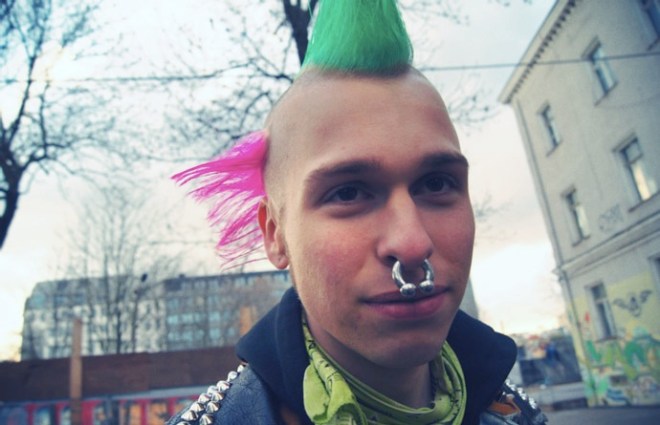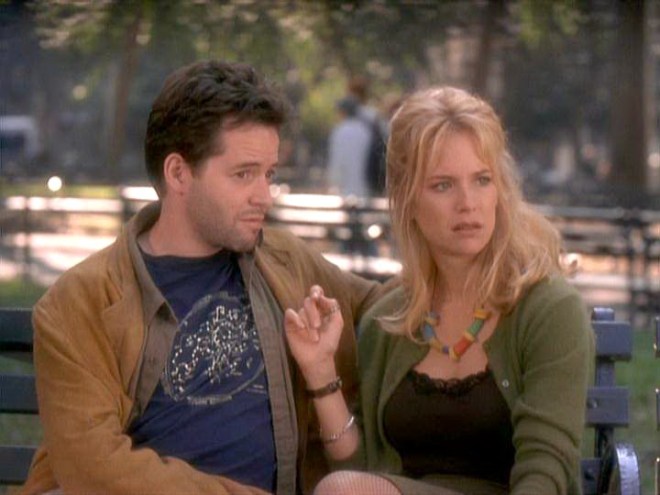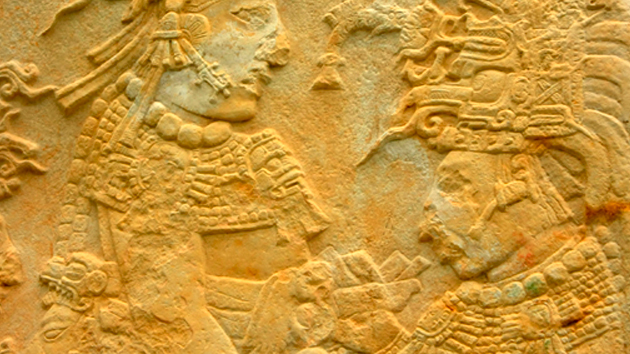Beijing, 24 May 2014
As readers of my previous post will know, every time I go back to Europe now after four years of living in China, I am intensely aware of physical differences between Europeans and Chinese. In the previous post it was differences in nose size that I dwelt on. In this post, I will dwell on ears. Or more specifically what people in Europe are doing to their ear lobes.
Let me explain.
I don’t think I’ve ever seen a Chinese person here with ear lobes looking like this
whereas it is a common enough sight now in Europe for it to impinge itself on my consciousness: “hang on, didn’t I just see one of those?”
When I was young, the most that people pierced of their bodies, at least in Europe, was their ears, and even then it was only women. And even then, many women didn’t – my mother didn’t, my sisters didn’t, my grandmothers didn’t; my future wife didn’t, my future mother-in-law didn’t. I suspect it was a social thing. Nice Young Ladies didn’t pierce their ears, Gypsies and Peasant Girls did. When I was at University, I once voiced the idea of having my ear discreetly pierced and wearing a small ring; it was beginning to come in as an alternative fashion. My then-girlfriend decisively nixed the idea – I would look queer, she said (“queer” being then what “gay” is now). Then, quite suddenly, in the early 1980s as I recall (my wife and I were recently discussing the timeline), we began to see young people with multiple rings in their ears, then sporting rings or studs in their noses, then in their eyebrows, cheeks, tongues, belly-buttons, … we even read about people piercing more intimate parts of their anatomies, the mere thought of which I find too horrible to contemplate.
At the beginning, piercing, whichever part of the anatomy was concerned, was very much an alternative lifestyle, the sort of thing squatters and punks would do.
But slowly it entered into the mainstream. I mean, didn’t Mathew Broderick, in the 1997 film Addicted to Love, discover, when he kissed his soon-to-be ex-girlfriend, a primary school teacher and therefore quite mainstream, that she now sported a tongue stud?
Or look at Zara Phillips, granddaughter to “Her Majesty Queen Elizabeth the Second of the United Kingdom of Great Britain and Northern Ireland” (to give the old lady her full title). She has a tongue stud
as well as a belly-button stud. More mainstream than that is difficult to find.
But this stretching of ear lobes seems quite a new phenomenon in the piercing movement (although I read somewhere while preparing this post that it started back in the 1990s; if it did, it was happening in parts of town that I didn’t visit). I was particularly struck by it because it is undoubtedly more spectacular than many other forms of piercing, but also because it reminded me of a book which I had read long, long ago, Aku-Aku: The Secret of Easter Island, by Thor Heyerdahl.
When I was young and still dreamed of becoming a polar explorer or finding the long-lost El Dorado in the Amazon forest or accomplishing some such feat of derring-do (although exploring the moon was never on my bucket list; my feet were always planted firmly on this planet), I loved Heyerdahl’s book The Kon-Tiki Expedition, the story of his 1947 trip across the Pacific on a balsawood raft, to prove that the indigenous peoples of South America could have sailed to Polynesia. So I eagerly read Aku-Aku when I came across it in the library at school. The book is about an archaeological expedition which Heyerdahl led to Easter Island in the Pacific Ocean. The book is quite light on serious archaeology, but it is full of exciting “discoveries” of one form or another. What I particularly remember, though, was Heyerdahl’s description of what the first European discoverer of the island, Admiral Roggeveen, found when he arrived. The Admiral was greeted by a chief:
He was ornamented with a crown of feathers on his head, which otherwise was close-shaven, and he had in his ears round white pegs as large as fists. This man showed by his bearing that he was a prominent person in the community, and the Dutchmen thought that he might be a priest. The lobes of his ears were pierced and artificially lengthened so that they hung down to his shoulders, and the Dutch noted that many of the islanders had ears artificially lengthened in this manner. If their long ears got in the way when they were at work, they just took out the pegs and tied the long flap up over the upper edge of the ear.
Heyerdahl’s book contained a picture of a drawing made at around the time of these first European trips to Easter Island. I don’t know if it was this particular one, drawn in 1777, but it’s close enough.
And to show no gender bias, I include a photo of a companion drawing, of a woman.
The idea of looping the extended ear lobes over the top of the ear to get them out of the way flipped me out.
These “long ears” seem to be reflected in Easter Island’s famous stone heads.
So when I began to see these extended ear lobes around me in Europe, I was transported in my mind’s eye back to Easter Island (which I’ve never visited, by the way; some day maybe …).
I may be wrong but I think it will be a long time before a granddaughter of the Queen of the United Kingdom etc. has stretched ear lobes and even longer before we see this on an Obama or a Cameron or a Xi Jinpin. A discreet tongue stud is one thing, a large in-your-face ear lobe plug is another. This will stay in the alternative life style for a while.
Yet it was not always so. I mean, King Tutankhamun, King of Upper and Lower Egypt, Lord of the forms of Re, Strong bull, Perfect of birth, He whose beneficent laws pacify the two lands, He who wears the crowns, who satisfies the gods (King Tut to you and me) had stretched ear lobes if his mummy casings are to be believed
And it seems to have been common among the rich and powerful in Mesoamerican cultures. For instance, Olmec stone heads show clear evidence of ear lobe plugs
as do Mayan bas-reliefs such as this one from Bonampak
(I don’t think you had your head sculpted in stone if you were a peasant …)
The Buddha also had stretched ear lobes. His statues always show long ear lobes, such as this one in Japan
and this one which I just recently saw in Bangkok
In his early life as a rich aristocrat the Buddha had worn heavy jewelley in his ears as a status symbol, the weight of which had stretched his ear lobes. When he eventually renounced his wealth and discarded his jewelry, his ear lobes were permanently stretched. By showing the Buddha’s stretched ear lobes without jewellery, images of him memorialize his renunciation of worldly wealth. Nice idea …
So anyway, one day maybe the rich and powerful of the world will sport ear lobe plugs (and loop the ear lobes over the top of their ears when they are working). But for the time being the best we can hope from them is a bright tie.
__________________________________
Young woman with stretched ear lobes: http://upload.wikimedia.org/wikipedia/commons/thumb/a/aa/Young_woman_with_stretched_ear_piercing.jpg/634px-Young_woman_with_stretched_ear_piercing.jpg [in http://en.wikipedia.org/wiki/Stretching_(body_piercing)%5D
Young woman with stretched ear lobes-2: http://2.bp.blogspot.com/-FBF5-mgmLZY/T7Z9s5JL_OI/AAAAAAAAAcI/ri7vlCt8CtQ/s1600/Tina-1.jpg [in http://www.urbanfieldnotes.com/2012/05/dream-of-90s-is-alive-in-philadelphia.html%5D
Pierced punk: http://www.lilies-diary.com/wp-content/uploads/2012/04/Punk-Iro-Piercing.jpg [in http://www.lilies-diary.com/festival-in-berlin/%5D
Matthew Broderick and Kelly Preston: http://www.hotflick.net/flicks/1997_Addicted_to_Love/997ATL_Kelly_Preston_006.jpg [in
Zara Phillips with tongue stud: http://www.hellomagazine.com/imagenes/royalty/201012224698/zara-phillips/life-in-pictures/engagement/0-14-900/tongue–a.jpg [in http://www.hotflick.net/pictures/997ATL_Kelly_Preston_006.html%5D
http://www.hellomagazine.com/royalty/gallery/201012224698/zara-phillips/life-in-pictures/engagement/10/%5D
Easter Islander with long ears: http://www.chauvet-translation.com/figures/Figure006.jpg [in http://www.chauvet-translation.com/figurelegends.htm%5D
Easter Islander woman with long ears: http://www.chauvet-translation.com/figures/Figure007.jpg [in http://www.chauvet-translation.com/figurelegends.htm%5D
Easter Island statues: http://images.nationalgeographic.com/wpf/media-live/photos/000/597/cache/easter-island-statues_59766_990x742.jpg [in http://travel.nationalgeographic.com/travel/365-photos/easter-island-statues/%5D
Tutunkhamen pierced ears: http://www.jobananas.com/images/Tutankhamen-stretched-ear-lobe.jpg [in http://www.jobananas.com/ear-stretching.html%5D
Olmec statue: http://ruedasdetiempo.files.wordpress.com/2012/04/img_1033.jpg [in http://ruedasdetiempo.wordpress.com/2012/04/25/skwinkles-milch/%5D
Maya ears: http://maya.nmai.si.edu/sites/default/files/null/bonampak_s2.jpg [in http://maya.nmai.si.edu/gallery/bonampak%5D
Buddha Japan: http://4.bp.blogspot.com/-5wZTLBPOMWY/T5zMran9GwI/AAAAAAAAP5M/ZTe32OseUs4/s1600/buddha-of-kamakura-japan.jpg [in http://bonniesbooks.blogspot.com/2012_04_01_archive.html%5D
Buddha Bangkok: my picture
Obama with red tie: http://4.bp.blogspot.com/-LTcV1taYCGc/UXM3OME3p7I/AAAAAAABHRA/w42CCIaMczI/s1600/1.jpg [in http://johnbrownnotesandessays.blogspot.com/2013/04/chairman-jared-speaks.html%5D














Interesting read thanks
LikeLike
Thanks! Glad you liked it
LikeLike